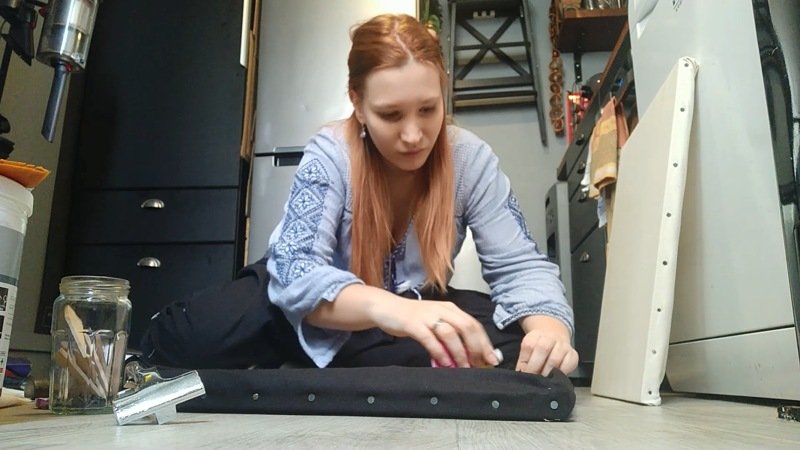The technical recipes of Marie Isabelle
The online gallery France Suisse Les Koronin (Die Koronen) publishes a recipe for the technique of materials related to the profession of painter. Our visual artist Marie Isabelle explains to us how an Art painting begins first with the manufacture, the mounting of the canvas on the wooden frame. By Mary Isabelle: As I told you, I am committed to doing the most artisanal work possible. It is thanks to my teacher in preparatory school that I learned to choose my roll of canvas by the meter, to cover a frame and to prepare my supports with natural primer.
THE CHOICE OF CANVAS
It was at the Saint Pierre market at the foot of the Sacré-Coeur in Paris that my master took me to choose my canvas. Simply put, there really isn’t a “good” or “bad” canvas. Just a few basic criteria to respect: A canvas that is not too thin (to prevent it from cracking when stretched) Not too rough or too worked at the seam (otherwise the paint spreads badly) Who does not smell the humidity For my part, whether linen or cotton, I particularly appreciate fabrics that have a little rough material, slightly thick, beige with small black dots. The trick is to compare with other rollers by touching and massaging them! The crush comes naturally, a bit like when you test a wine. My master invited us to smell them at the time, but that was before the Covid…and I must admit that with the mask it’s a little more complicated to smell. When it was still possible, the well-made linen canvases gave off a light amber scent reminiscent of the fields in summer! It’s a good sign ! As for the prices, I take the intermediate range, I’m not rolling for gold either, and luckily, the canvases that I like are precisely in my prices! In the video, I also fell for black tinted canvas. This will be a crash test for a future personal project. I have never tried to paint on colored canvas and even less on black. I’m curious, and can’t wait to try!
THE APPRET
Systematically for my orders, I use the binder-type chemical primer CAPAROL. First for practical matters: – just spread 2 coats with a spalter (after having moistened the canvas with lukewarm water and left to dry) for the after and for the final varnish. – The smell is not unpleasant. – The binder dries quickly and leaves a smooth and homogeneous result. But also because today, some customers do not necessarily appreciate knowing that their canvas has been prepared with animal skin glue or fish glue. However, for my personal projects, I find the natural primer fun to try because like any cooking recipe, its preparation is technical, it’s satisfying to do things yourself and above all to succeed! For the preparation of the natural primer, I will prefer hide glue. It has the advantage of feeling less strong than bone glue and being cheaper per kg.
THE NATURAL PRIMER RECIPE
I moisten my canvas support with a cloth soaked in warm water and let it dry. I open the windows! it will smell like the farm in the whole apartment! I heat 50cL of water in a saucepan that will only be used for this purpose (yes, the smell can hang on!) without boiling it. I add about 150g of hide glue beads and stir constantly until the glue completely dissolves in the water. The texture should be liquid like water. I wait for the mixture to cool down before applying to my support. 2-3 coats should be enough. I let it dry in a room that is not too humid and away from radiators. Drying can take overnight. When the canvas is dry, there can be unpleasant surprises like: The canvas is curled and relaxed Presence of white traces like sweat asperities Before throwing away the canvas, it is still possible to catch up by wetting the canvas well with lukewarm water to tighten it (run a jet of water from the shower over it) then iron a layer of skin glue on traces and asperities. These traces are a sign that the primer is missing.
There you go, I hope my little tips will have you more! Do not hesitate to check out my work on my instagram, and my website! Mary Isabella.
Are you an artist in one of the fine arts (fine art painting, sculpture, engraving, drawing, fine art photography, etc.) would you like to benefit from our Swiss and French showcase open 24 hours a day to the world? Write U.S !



0 Comments